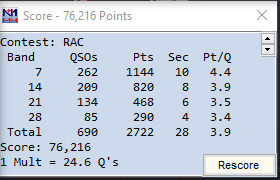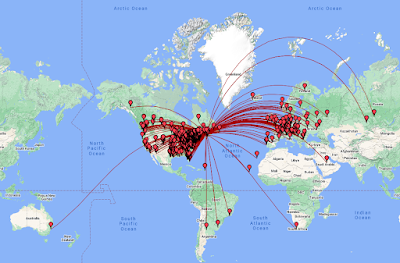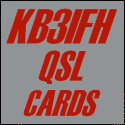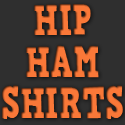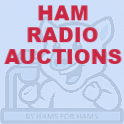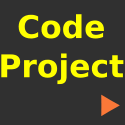Posts Tagged ‘CW contesting’
 ARRL International DX CW contest.
ARRL International DX CW contest.
Overall the weekend had great solar conditions and huge participation worldwide. At times it was very hard to find a clear section of the band to call "CQ Contest". Some may find that frustrating but in the big picture that is a very good thing. I had some memorable contacts in Japan, Australia, St Helena Island, FK8IK on New Caledonia Island and last but not least PE4BAS fellow blogger was logged on 15m. In this contest, I ran (calling CQ contest) for about 98% of the time at about 32-24 wpm. I did have an "I can't believe I did that" moment. On Saturday just before I stopped to have dinner I wanted to try a different macro. I turned the power down to zero and tried it a few times to make sure it would work. I then went for dinner and came back to go on 40m. Now 40m openings for me most of the time do not last very long. I got right back on and started calling CQ and calling and calling. I noticed on the RBN I had no spots which was a bit odd as most of the time I can something into the U.S. Then it hit me the power was still at zero! Well, that was about 20 minutes of lost time.
All the bands (for me 10-40m) were in great shape and very busy. On Sunday evening around 6:30 local time, things started to go downhill for me. My ability to concentrate was just not there as I heard a call sign and only one or two letters registered with me. The best way to describe it was brain fog, it is not unusual for me toward the end of a long contest to get this. I was even having issues with keyboarding. I would type Zero when the call was 9, the call 9A2Y I had 0A2Y also when typing I would hit two keys at once. I then would be transmitting oddball calls. At that point, I would try to fix the call on the fly and most of the time that is a challenge and at this point in the game, it just made things a nightmare. I decided to pull the plug early as my frustration level would take the fun out of things.
 Winter field day….burrrrr well not for me.
Winter field day….burrrrr well not for me.
Well, last weekend I completed my 2nd field day "event" Some don't consider it a contest. I had a blast and can't understand why I have not taken part in this event in the past. This field day was the winter field day, now I am NOT a snow bunny at all so I was at my home station with the classification H and it was only me which made it 1H for the session...event....contest. I enjoy this contest (ops I said it) because max power is 100 watts and lots of folks are operating with minimal setups. This means I have to listen hard and pull some stations out of the noise floor. I operated only CW ( surprise surprise) and the speed is not rocket speed and things are much more laid back! I found the average CW speed in around 22-25wpm and that is fine with me. It gives my ears a break from the 35wpm and up I am used to in contests. The way I look at it any practice at any CW speed is great practice. In this...contest I hone my skills by digging calls out of the noise floor and there are lots of them. So cheers to all who took part in winter field day especially those who braved the snow and cold temps! Looking forward to the summer field day coming soon.
 Reverse Beacon Network strange event
Reverse Beacon Network strange event
During the 2023 Canada Winter contest I had an odd thing happen twice with the Reverse Beacon Network website. But before I go into that let's talk about what I use the Reverse Beacon Network for in contests. This site has a
huge amount of stations that just listen for stations calling CQ. If you
are heard then you are shown on a world map along with your signal
strength to that location. This is a great tool during a contest for me
as it shows where and how strong my signal is. I have used this site for
years but in the last contest, something happened that never has and it
happened twice.
I was calling for some time on 40m CQ contest and I was getting Reverse Beacon Network feedback from my signal. The reporting station MM0ZBH reported me but on 20m? Informing me my signal was 6dB and on 14036 and not 7.030 where I was calling CQ contest this was at 2337UTC.
Earlier at 2212UTC the same station had reported me again on 20m this time at 14030 when I was calling CQ on 7030 and my signal strength this time was 28dB. This was odd and even more so when it happened twice in the contest. Any ideas out there and has anyone had the same issue happen to them?MM0ZBH is the 6th station down on the list
 Canada Winter contest results
Canada Winter contest results
I am a bit behind with my posting about the Canada Winter contest that happened last weekend. I have been occupied with looking back on 2023 and my New Year's post. As said last weekend was the Canada Winter Contest I took part in the CW-only category and had a blast. The contest covers from 2m to 160m (excluding WARC bands) SSB and CW in which you can do either of both. The conditions were great in this part of the world and the bands were busy with contesters. I called CQ contest (running) for over 90% of the contest which helped me greatly to improve on working pileups.
Some of the contact highlights were contact into the Yukon, South Africa and Australia. My average QSO's per hour was 66 and my highest was 90 per hour. The antenna I was using was the Hustler 4BTV (10m-40m) this limited me from 80 and 160 therefore on Friday evening I had to pull the plug at about 0120 UTC as 40m was closing down for me. The contest finished at 2359UTC on Saturday but I was getting tired and pulled the plug at 2330UTC.
During the day on Friday here in New Brunswick, we did have some freezing rain and that affected some radio ops down this way. Fortunately, I can tilt my antenna over which I did and cleaned the ice off and put it upright again. I did this just before the start of the contest and had no issues.
I loaded my log in ADIF format into Log Analyzer which gave me a map representation of my contacts. You can see my two distant contacts in South Africa and Australia. This software uses the station's grid square for map location. The issue with this is incorrect grid squares give you some odd results. In my case, the map shows one station in Saudi Arabia and another in the middle of the ocean. Both are a result of an incorrect grid square. But overall the program works great and gives you a nice visual of your contest contacts. The Log Analyzer software does have a workaround for when this happens details are found in a link in red at the top of the website page.
 |
| Almost worked all provinces. |
 Some time spent on the radio.
Some time spent on the radio.
The weather here for the weekend was not too great so why not spend some time on the radio? I found the Croatian 9A DX contest to take part in. The solar forecast was not promising but I thought why not spend a few hours on the radio on Saturday and see what happens? Turns out the contest was busy and I managed to practice my CW contesting.
Below are the results:
 ARRL 10m contest has come and gone.
ARRL 10m contest has come and gone.
This past weekend was the running of the ARRL 10m contest for both CW and SSB. We are in a very nice time in the solar cycle which makes the 10m contest a popular one. The weekend solar conditions were great with the Kp index floating between Kp0 and Kp1. With good solar weather meaning an active sun also comes solar storms with very high Kp index and poor conditions but this weekend was great. As always here at VE9KK I was CW only entry in the contest. Compared to last year's contest I noticed the window into Europe in the mornings did not last that long this year. I did notice more of a window opened in the afternoon toward South America.
I heard no what might be called exotic DX at my end and most of my scoring was contacting U.S. stations. Due to the propagation of 10m here, I was on the radio at about 7 am local time and off at 5 pm. I found that after 5 pm signals were just not reliable, with many repeats and then the station would just fall off the face of the spectrum. I had a few stations contact me from the Netherlands including Bas PE4BAS a fellow blogger. We did talk a week before the contest about trying to touch base in the contest but you never know.
I have a program called log analyzer in which you load your contest log in ADIF format (other formats are supported). The program gives you a world map of all your contacts, there are many options the program offers. I do find that if a station you contacted in the contest has an incorrect grid square then you may see an odd country you contacted. For me, the contest showed a U.S. station that was in Saudi Arabia. It was due to his incorrect grid square but that only happens very seldom.
In this contest my best 1 hour of running was 100 contacts but most of the time it averaged in around 45-70. I did very little searching and pouncing or S&P as it is called. I enter the contest as unassisted meaning I do not use any spotting software. I do this as it gives me more of a challenge. If I entered the assisted category I would have call signs listed on the waterfall of N1MM+ contest software. I could mouse-click from one call to the next and bang off contacts and points. Also, I could see multipliers as well this way. As for me I have fun unassisted and call CQ contest and S&P the waterfall. Below are the results of this year's ARRL 10m contest. Oh and before I go I did have Murphy visit me during this contest or maybe it was just plain old age. I all of a sudden lost mouse control. No matter what I did there was no movement. I ended up restarting my PC which during a contest is a major deal. Once restarted my old age moment passed and I realized I had mouse control again. It was due to the fact I was using the mouse on the left of my desk before the restart and that is the mouse for my Linux PC!!! On the right side of my desk is my Windows mouse and I did not even realize I was using my left-hand side mouse. No restart was needed in the end after all.
 VE9KK the world of CW 2023-11-27 18:05:00
VE9KK the world of CW 2023-11-27 18:05:00
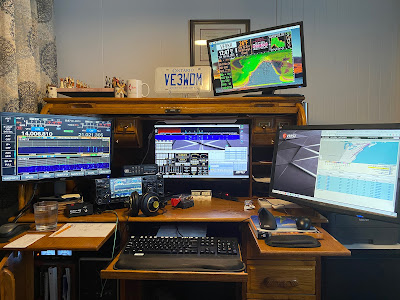 |
| My setup and the VE3WDM is my lic plate from Ontario |
This past weekend I was busy with the CQ World Wide CW contest...go figure! The solar weather was not looking good and for most of Saturday, the Kp index was around 6 and for a short time moved to 7. I was shocked the conditions were still decent. On Sunday the Kp index fell to 2-3 which also gave better conditions. I entered as low power (100 watts), all band and unassisted meaning I did not use QSO finding assistance. The bands I operated were limited to my antenna the Hustler 4BTV which meant that was 40,20,15 and 10m.
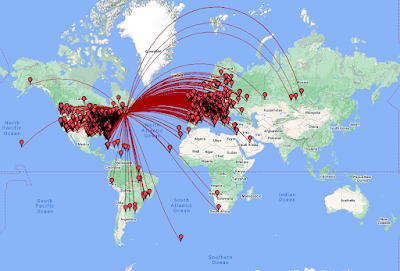 |
| Spot in the middle of the Ocean is code garble SN70 I put zero and not the letter O |
Some of my highlights were getting a call from fellow blogger Bas PE4BAS, KH7L and V51YJ. I think because of the conditions solar weather wise it limited me from Southeast Asia. I did spend a lot of time in the operating chair and toward the end of the contest I started to get what I call "code garble". I heard a call but it just did not register, I heard a call but entered numbers or letters on the keyboard that had nothing to do with the call and so on. For example, numerous time I had a call starting 9A call me and every time I entered 0A. I kept having to correct it and that meant time and good old 9A wondered what I was up too. I ended up pulling the plug about an hour before the contest ended.
My best hourly contact rates were in the 130's and at the low-end 50's. I have been practising handling pileups using N1MM logger. You can set it up to give you pileup simulations. Not that I am a big gun but when you get spotted on the cluster things can get a bit hairy at times.
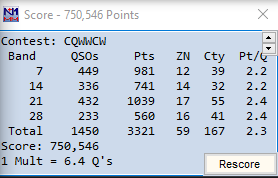 |
| The final results |
During the contest 99% of the time I was calling "CQ contest" or running as it is called. My speed was 32-34 wpm. I find if your calling at 32 wpm you get replies at 25-36 wpm. When calling at 34wpm sometimes the comebacks can be very fast and mistakes happen. In this contest, the exchange is 599 (signal report) and CQ zone and that is filled in by the contest program. This means when your calling CQ contest you can go a bit faster as most slower callers most likely found your call on the cluster. When a serial number is involved a lot of contest stations slow down the serial number part of the exchange.
Overall it was a great contest and I look forward to it again next year. The next contest I am looking at is the RAC Canadian Winter contest in December.






